A Model A powered Pietenpol

In his earliest efforts, the Model T could not be coaxed into producing enough power. A Gnome rotary was tried, but was also a disappointment. An "Ace" engine, a modified Ford, made the first breakthrough in Pietenpol's first monoplane design. Then with the availability of the Model A engine, his efforts came together to produce a powerplant that could do the job. He was able to overcome the weight handicap by keeping the airframe small and light and get the right combination to fly two people in a fashion equal to the commercial Swallow. One that flew in a manner described as being "between a Jenny and a Waco". The rest is history.

Bob Taylor's AAA Scout and Air Camper powered by Ford
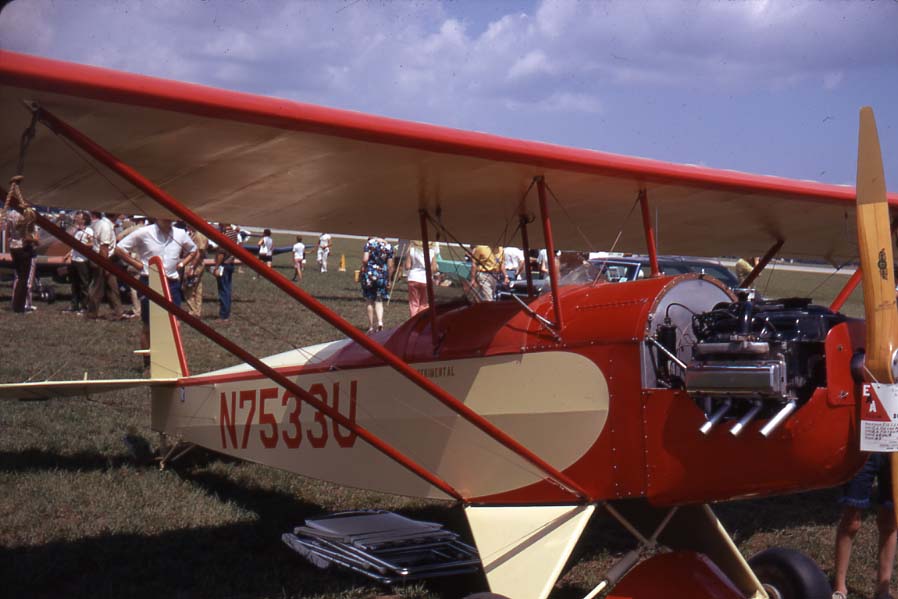
The Corvair powered Pietenpol
These were all the early 145 cu. in. engines, and what others were writing, including Pietenpol himself, was that the 1964 and later 164 cu. in. model was preferred. He had flown the 145, but was in a position to know. For comparison purposes, the Continental 65 has 170 cu. in. Because it also had a rear-mounted flat air cooled engine, the Volkswagen could be thought of as the Corvair's European cousin. In France, enthusiasts had put the VW to work powering the Jodel and the Turbulent single-seaters and in England there was the Taylor Monoplane. All were even smaller than the Pietenpol Scout, but at roughly half the displacement of the Corvair the VW was not considered big enough.
Besides Pietenpol's work on the Corvair, R. Huggins had developed a plan for aircraft conversion along with his version of the VW. A Corvair conversion which appeared clean and workable was Bob Rofshus' installation on his Heath Parasol which he brought to Oshkosh. It used eyebrow scoops in place of the factory fan shroud and had a Stromberg aircraft carb with intake tubes grafted directly into the rear of the manifolds on the Corvair heads. In recent years the Corvair has found a new advocate in Wm. Wynne who has gained a new generation of enthusiasts for this engine.
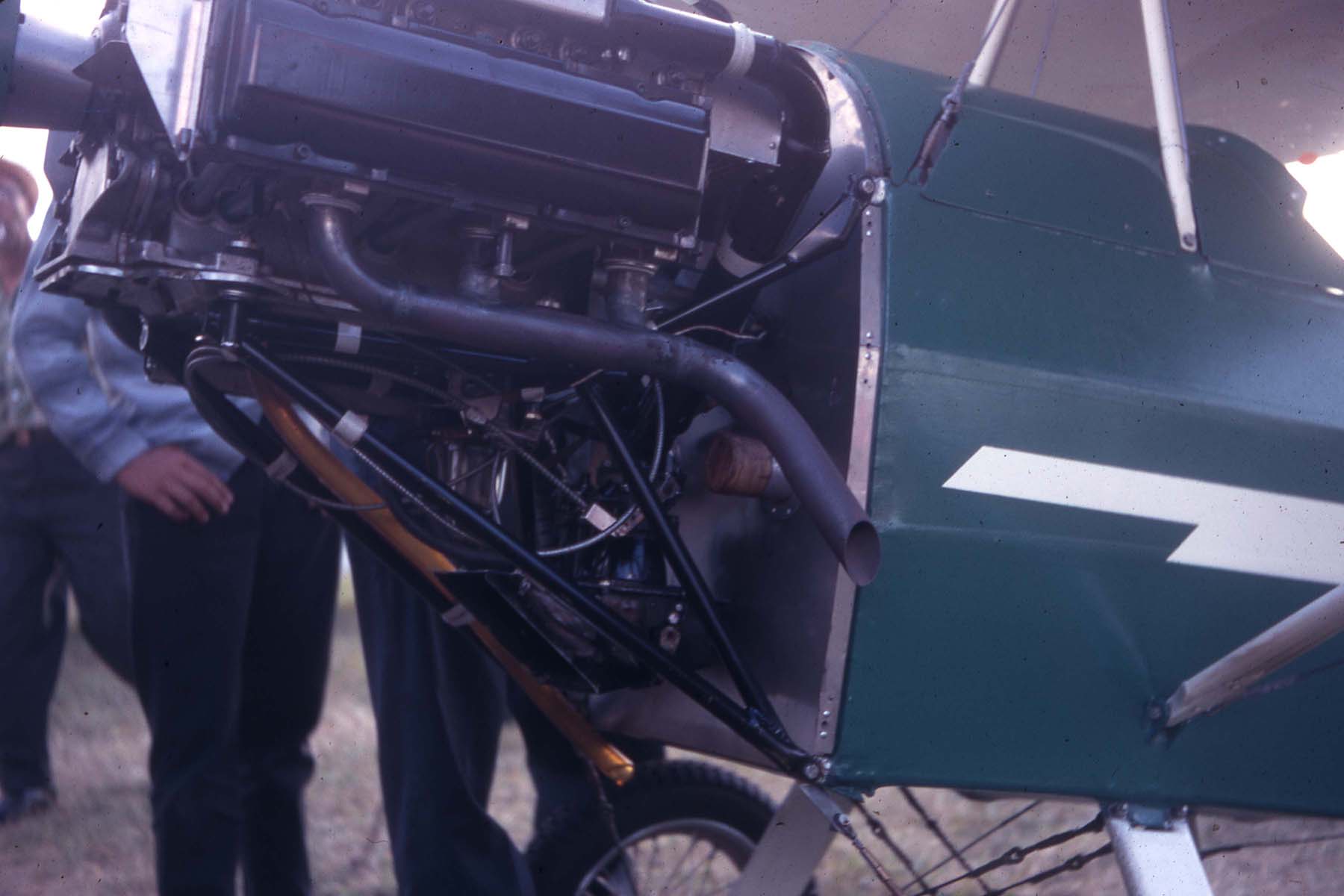
The Rofshus Corvair Heath
Later we acquired a 164 inch engine which appeared clean and bright but had suffered internal failure resulting in a badly bent rod. The scrounging instinct reached a new level when we towed home an abandoned 1964 Monza which did have an intact 164 engine. Neighbors again took a dim view of proceedings. Ultimately we had a new Troyer prop on this engine but did not solve the severe weight and balance problems in the GN-1 application or get functional carburation.
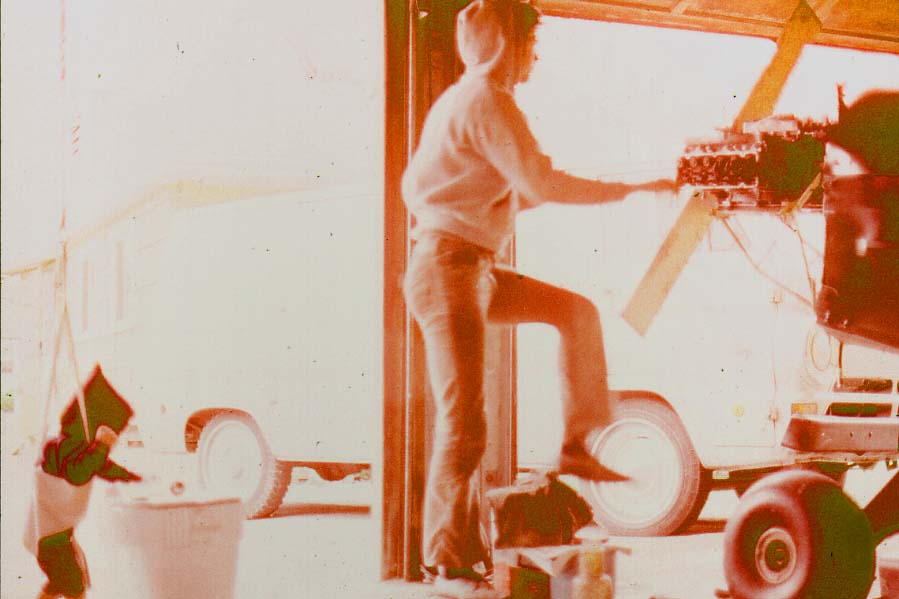
Babysitting son John and Corvair at Skunk Works II
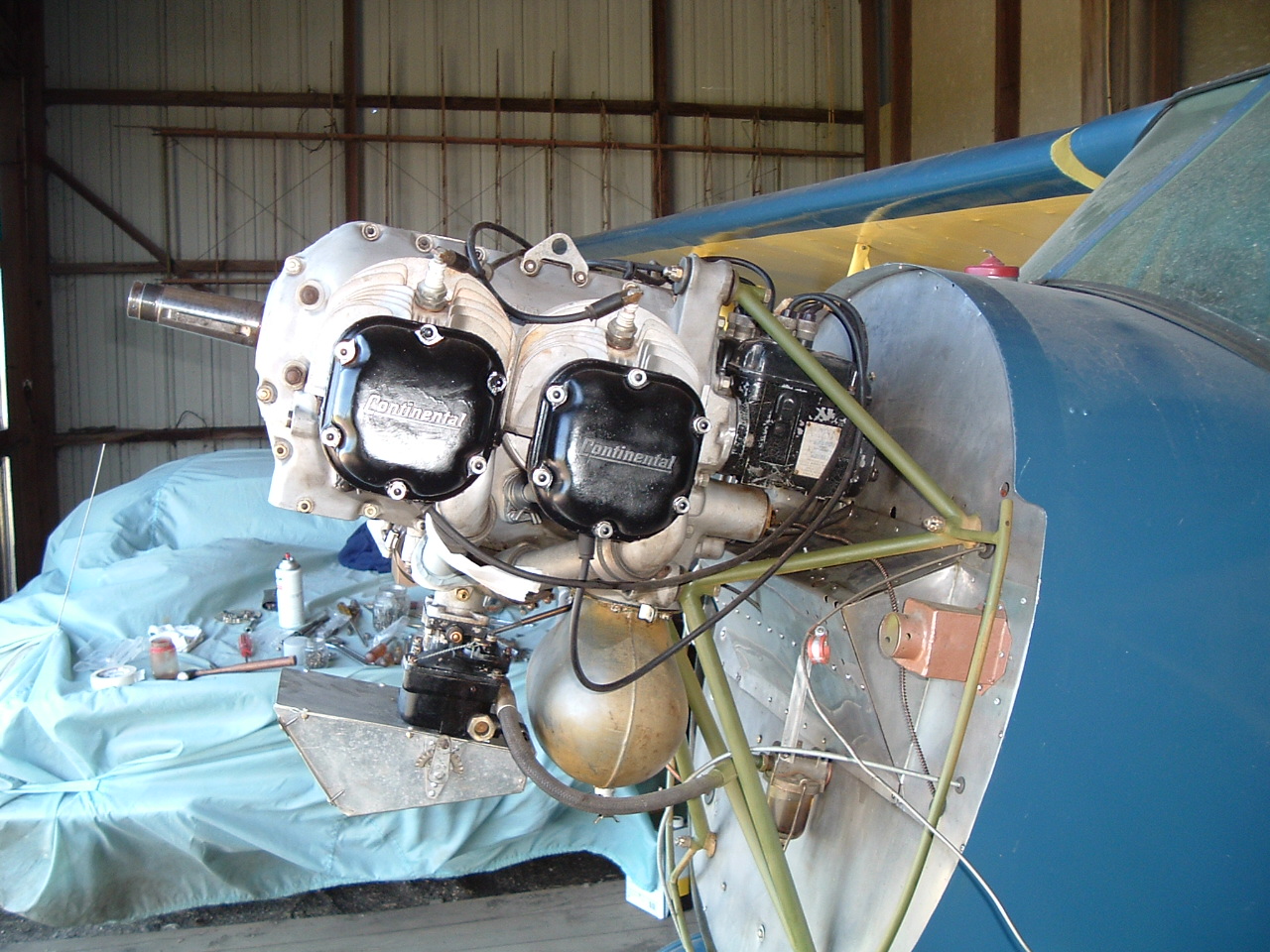
The Iowa Western Continental A-65-8 - after twenty five years
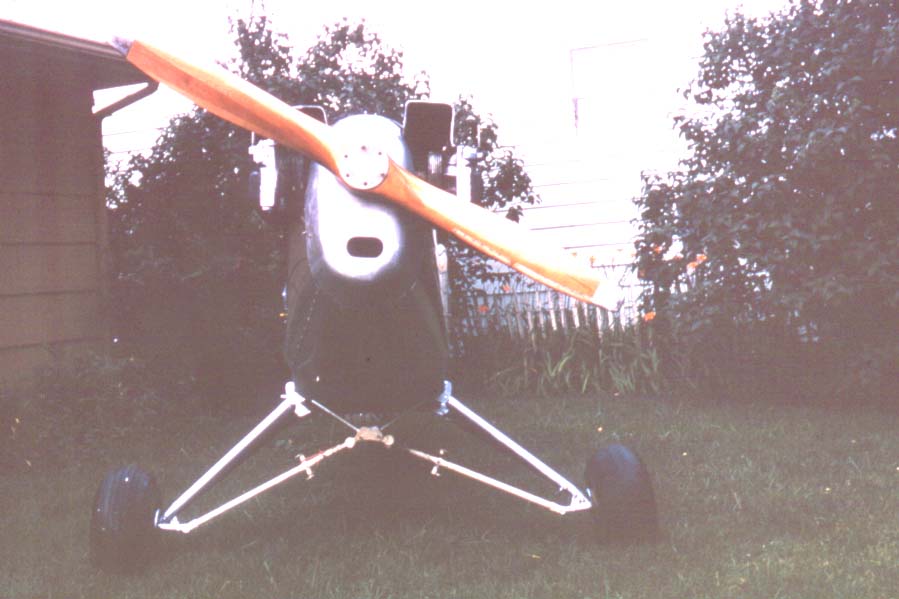
The Corvair Pietenpol that never was
When we first fired up the Continental powered Pietenpol, the plane was transformed from a quiet and inert object which we had spent much time around, into a fire-breathing, quaking monster of a thing. At least it certainly seemed so. 65 horsepower does not seem like much, but when it batters the air with a six foot propeller and barks through a straight exhaust it can satisfy any appetite for noise! That sound retreats somewhat when the plane lifts away from the ground, which N7152 did for the first time in 1978. It was a red letter day to be sure. It flew very similarly to the Champs we were used to. We went up to 3,000 feet, did turns and various throttle settings, and after an hour went spiralling down to a rather good landing. No one reported hearing any whooping on the ground.
Since no passengers are allowed during the test period, the front cockpit was covered during this period. A three surface flat panel windscreen about ten inches high gave very good protection from the slipstream and a similar one installed in the front cockpit when it was opened later. Some owners report slipstream discomfort, so an adequate windscreen is important. A baseball cap stays on in flight and goggles are not really necessary in N7152. The first flight was done with crash helmet and nomex suit! The test period flights were completed in the first year. The only structural weakness uncovered was in the left engine eyebrow scoop. An aluminum attachment strap failed and was replaced by a stainless piece.
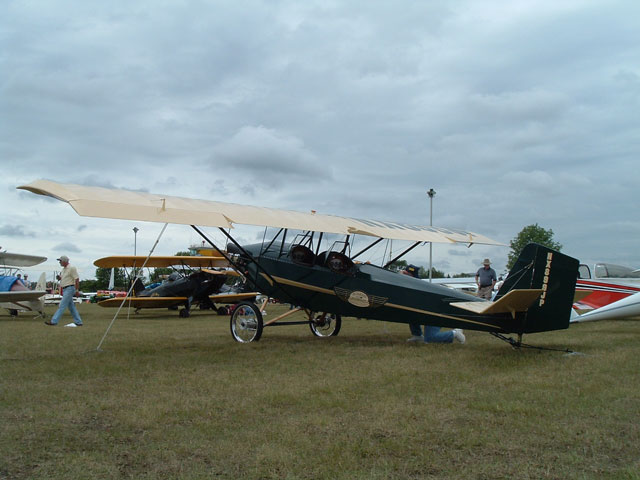
This striking Piet has radios recessed in the center section!